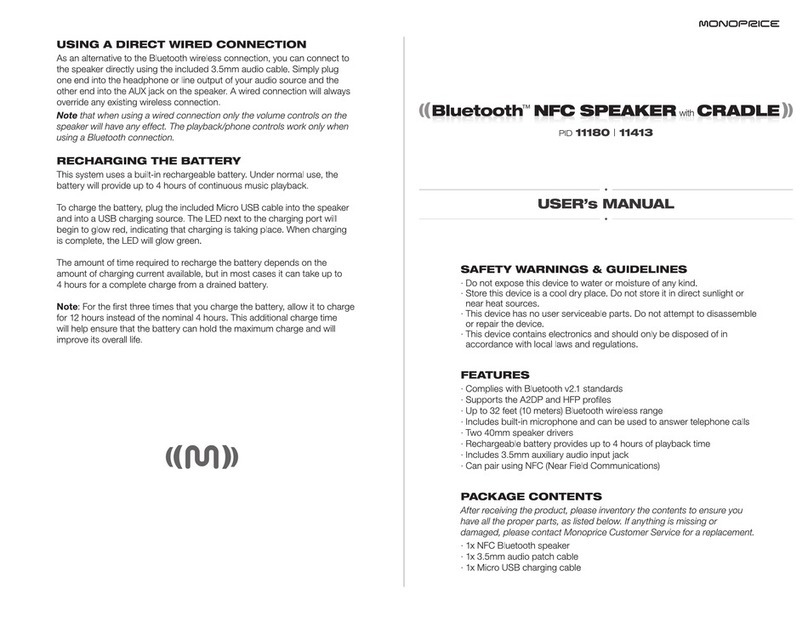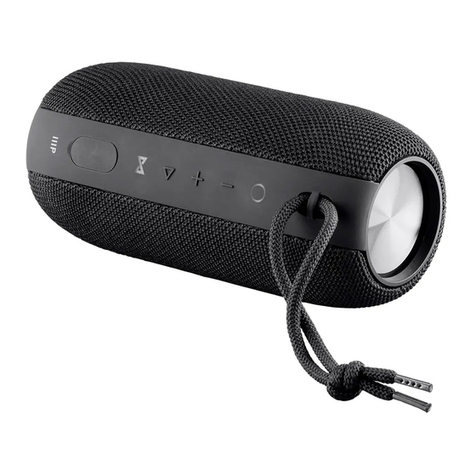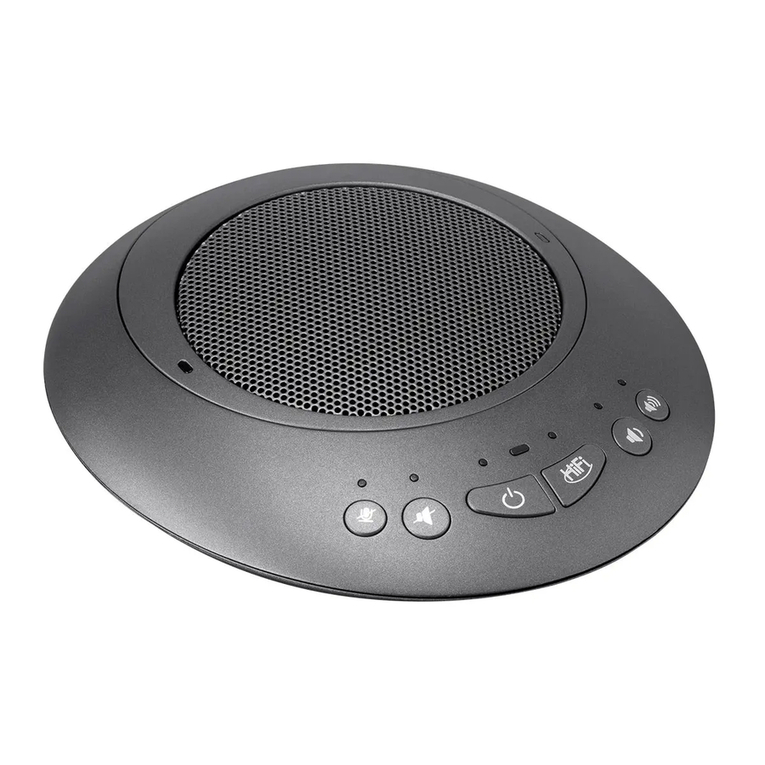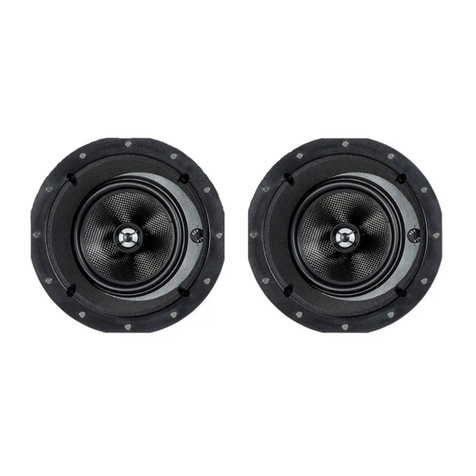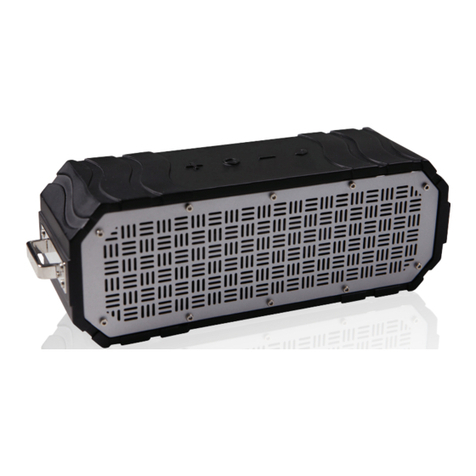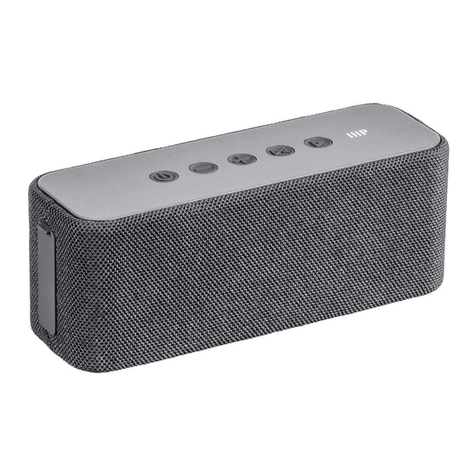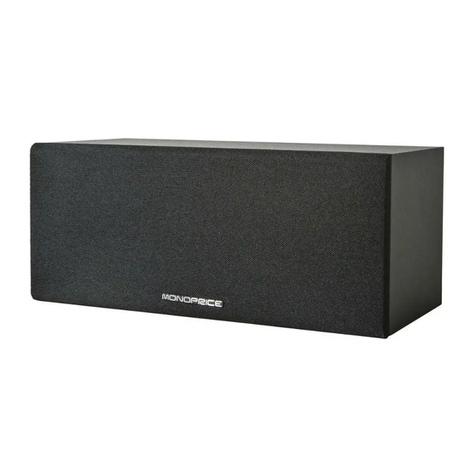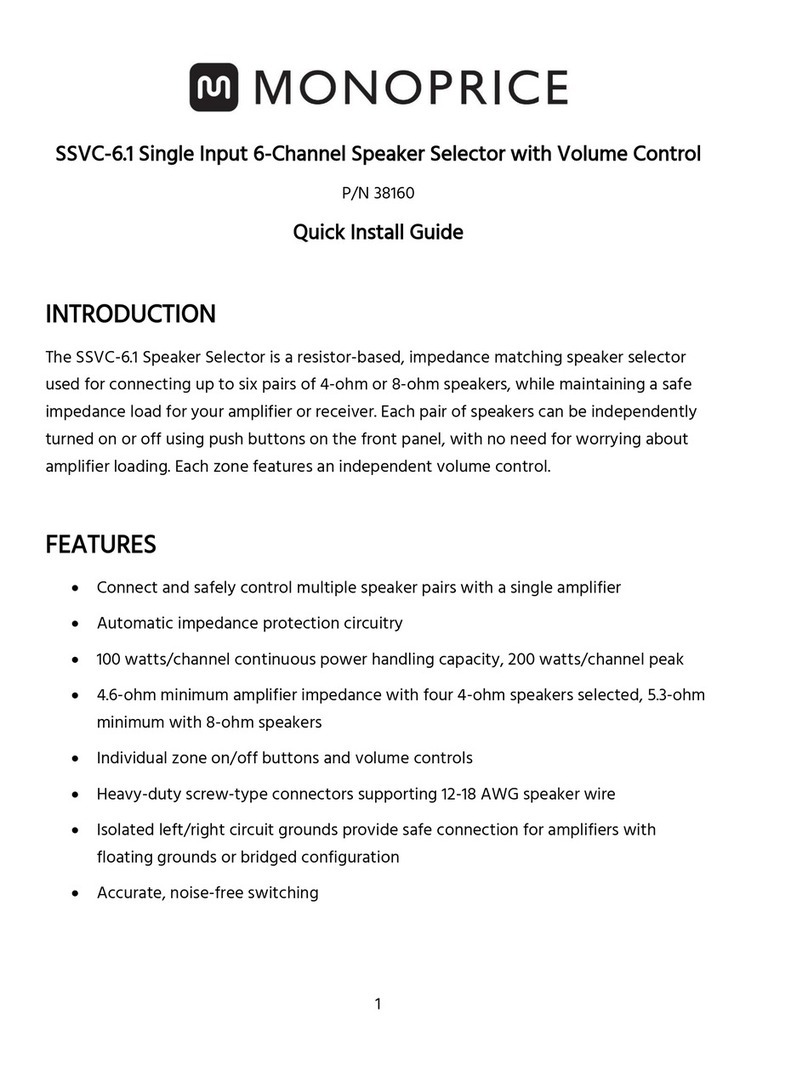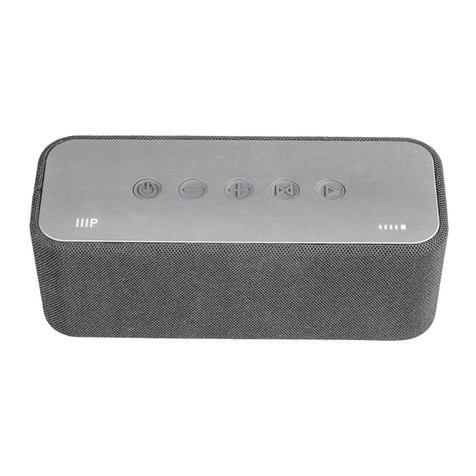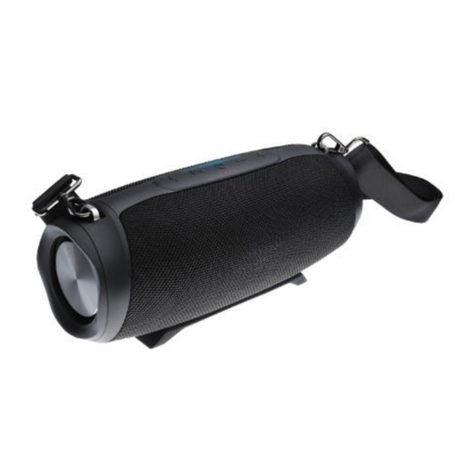4
CONSTANT VOLTAGE (70V) VS 8ΩSPEAKER SYSTEMS
This unit is designed to operate in either a constant voltage or 8Ωspeaker system, so it is important to
identify which type of system you have and set the switch at the back of the speaker to the correct one.
Select the 8Ωsetting for traditional stereo systems. For constant voltage systems, select the 70V setting
that delivers the desired output volume for the rest of your installed speakers, making sure the wattage
does not exceed your amplifier capability as explained below.
A constant voltage speaker system differs from a traditional 8Ωspeaker system in that it uses a step-up
transformer at the audio source to raise the voltage and lower the transmission line current. At the
speaker end, a step-down transformer converts the signal to a normal speaker-level voltage. This reduces
power loss on transmission, allowing the use of longer speaker wire runs using smaller gauge wires.
Additionally, a constant voltage speaker system allows for the use of multiple speakers on each channel
without the need for complicated impedance calculations and configurations. In a constant voltage
system, all speakers on a given channel are connected in parallel and the complicated impedance
calculations are replaced by simple wattage calculations.
If you want to connect 2 speakers per channel in a traditional 8Ωspeaker system, you must either link
them in series, resulting in an overall 16Ωimpedance, or in parallel, resulting in an overall 4Ωimpedance.
In the 1st case, the 16Ωimpedance effectively halves the amplifier‘s output power, resulting in lower
overall volume. In the latter case, the 4Ωimpedance means that your amplifier must work harder and be
rated as stable at 4Ω. Adding a 3rd speaker to the mix would complicate it further, producing either a 24Ω
or 2.67Ωoverall impedance. Very few amplifiers are stable under 2Ωloads; this is usually not an option.
On the other hand, with a constant voltage system, you consider the RMS output wattage of the
amplifier first. This should be reduced by 20% to compensate for insertion loss. For example, if using a
100W amplifier, the total load from the speakers should not exceed 80W.
Each speaker on a given channel is set to a total value that does not exceed the rated power of <20%.
There is no need to worry about making the total as close as possible to the limit; ensure that the total
does not exceed the limit. If all speakers are set to the same wattage value, they will all have the same
volume level. If one speaker is set to a higher wattage value, it will be louder than the others, while a
speaker set to a smaller value will be quieter. This allows compensation for the environment in which the
speaker is placed: an outdoor speaker would need to be louder than a speaker placed in a small room.

